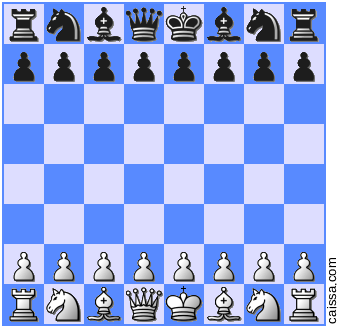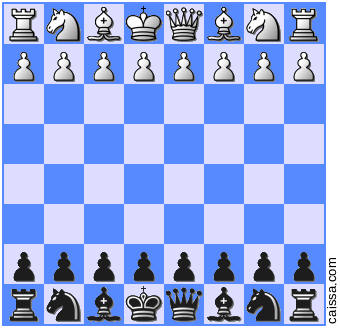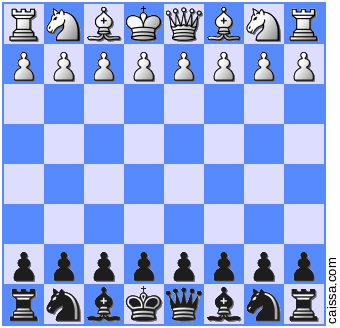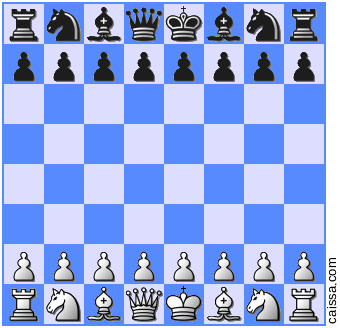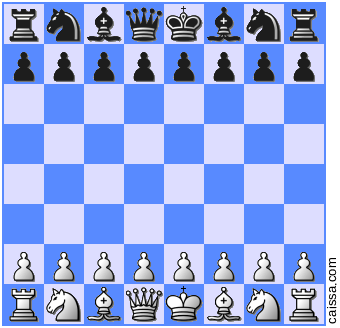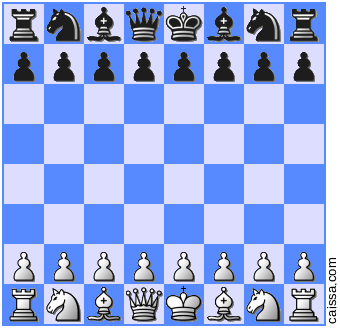I've recently begun to experiment with 1. f4 - Bird's Opening. This is a fairly unpopular opening and is somewhat disrespected due to the king being more exposed. However, it is quite playable and offers a variety of options and exciting play.
The pawn move gives white a very strong grip on e5 and supports advances on the king-side. Also, it does not immediately disclose white's intentions - allowing white flexibility in the attacking motifs:
Another great setup to launch a kingside attack. White has total control over the dark squares in the center with the dark squared bishop bearing down on the kingside. The king's knight can leap forward with an attack on g5 supported by the f-pawn and the rook is ready for action once the f-pawn is out of the way.
A flexible system with great ability to shift the attack to the queenside and support white's pieces advancing. The queenside pawns help stifle any queenside attacks black may be attempting and allow the dark squared bishop free reign over the a3-c1 diagonal.
For those of you that are fans of the hippo or universal type of systems, this setup works very well. White has expanded on the flanks making a solid but passive bid for central control. Follow up would be to castle, tuck the king on the h-square, and advance both central pawns and the queen forward one square. This formation has no weaknesses and focusses on counter-attack and trying to dance the knights around to more advantageous positions. It's not terribly exciting to play, in my opinion, but does work and is a good formation when aiming for a draw or pawn and king endgame.
A strong formation for a kingside attack. Note that the king's knight has maneuvered around to b3 to avoid early exchange. The queen can move over to e1 to support a kingside pawn advance. One would typically follow up with g4, and then either f5 or g5.
There's also a few different gambits possible with this opening. Black can reply with From's Gambit in the form of 1... e5 (in which case white can play it or offer the King's Gambit). If black replies with 1... d5 white can offer up c4 with Sturm's Gambit. I intend to delve further into these in a later post.
Anyway, here's a quick game from the other night for demonstration purposes:
1. f4 Nf6
2. Nf3 Nd5
3. e3 c6
4. b3 e6
5. Bb2 h5
I begin with my development and black moves his knight twice hoping for a quick pawn snatch, but e6 puts a damper on that. I fianchetto my bishop and he opens a diagonal for his queen and bishop and pushes back on the flank.
6. Nc3 g6
7. Nxd5 exd5
8. Bxh8 Bc5
I plan on exchanging knights to double black's pawns and black makes a blunder, allowing me to take the rook.
9. Bd3 Ke7
10. Bc3 Kf8
11. f5 gxf5
12. O-O d6
Black attacks my bishop causing me to retreat it, but he has lost castling rights and has a vulnerable kingside and minimal queenside development. I push the f-pawn to pry open the kingside and black tries to get his queenside activated.
13. Nd4 Nd7
14. Qxh5 Qe7
15. Qh8#
I start maneuvering my knight forward opening the diagonal for my queen. Black blundered again when trying to activate his queen allowing for a back-rank mate.
So, as you can see, this opening is safe as white as long as you play carefully. It allows for some creative and aggressive play and a possible edge for those of you who look for the psychological factor. For those of you looking for something new - give it a try!
